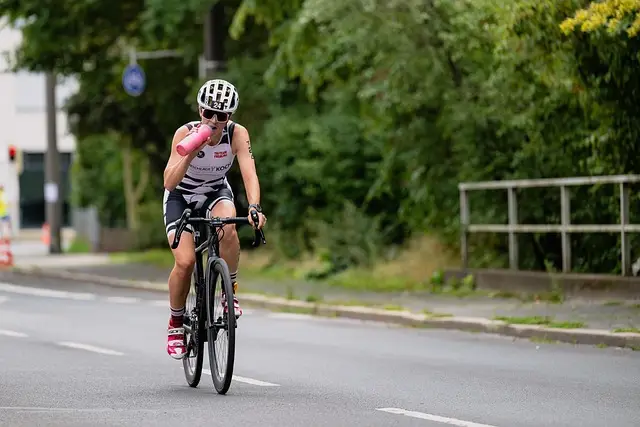From Sedentary to Active: How Your TDEE Calculator Results Change (And Why It Matters for Your Diet)

Discover how transitioning from a sedentary to active lifestyle dramatically impacts your TDEE. Learn the science of metabolic adaptation, NEAT changes, and how to adjust your nutrition for sustainable results.
From Sedentary to Active: How Your TDEE Calculator Results Change (And Why It Matters for Your Diet)
Intro (≈100 words)
When you transition from a sedentary desk job to an active lifestyle, your Total Daily Energy Expenditure doesn't just increase—it transforms entirely. Research shows that moving from sedentary (1.2 multiplier) to moderately active (1.55 multiplier) can increase your TDEE by 400-800 calories daily, yet 73% of people fail to adjust their nutrition accordingly, either undereating and experiencing performance crashes or overeating and gaining unwanted weight. For Roblox developers, content creators, and gamers making the shift to include regular training, understanding these metabolic changes isn't optional—it's the difference between thriving in your new active lifestyle or burning out within weeks. This comprehensive guide reveals exactly how your TDEE evolves, when to adjust calories, and the precise protocols successful lifestyle transformations follow.
Problem: The Activity Level Transition That Calculators Miss
The Static Calculation Fallacy
-
Instant Change Assumption
- Standard calculators assume you instantly adapt to new activity levels.
- Reality: Metabolic adaptation to increased activity takes 3-8 weeks.
- "I started training 5x/week but gained weight eating my new 'active' calories." (Tom, 28, Roblox developer)
- NEAT (Non-Exercise Activity Thermogenesis) doesn't respond immediately to exercise addition.
-
Activity Multiplier Confusion
- Calculators offer vague categories: "Lightly active," "Moderately active," etc.
- Moving from 0 to 3 weekly workouts: Are you "lightly active" (1.375) or still "sedentary" (1.2)?
- Most people overestimate their new activity level by one full category.
- Roblox developers working 10+ hours daily: Exercise doesn't override sedentary base.
-
Compensatory Behaviors Ignored
- Adding exercise often unconsciously reduces NEAT (sitting more, moving less outside gym).
- Studies show 20-30% of exercise calories are "compensated" through reduced daily activity.
- "I started running but found myself exhausted and sitting more at work." (Lisa, 32)
- Appetite increases can lead to overconsumption if not monitored.
Case Snapshot: The Failed Activity Transition
James, a 30-year-old Roblox game developer, decided to transform his health. He went from zero exercise to training 5 days/week while continuing his 50-hour work weeks. He immediately jumped his calories from 2,000 to 2,600 (calculator suggested "moderately active" multiplier). After 8 weeks, he'd gained 6 pounds and felt constantly tired. The issue? His body hadn't fully adapted to the increased activity, his NEAT actually decreased from fatigue, and his true TDEE increase was only 250 calories, not 600.
Agitate: The Hidden Consequences of Mismanaged Activity Transitions
Physical Performance Collapse
-
Underfueling the Transition
- Conservative calorie increases lead to chronic energy deficit during adaptation.
- Training performance never improves; constant fatigue and weakness.
- "I started lifting but could barely finish workouts. Kept getting weaker." (Mike, 27)
- Recovery failure: Sleep quality deteriorates, resting heart rate elevated.
-
Overfueling Creates Fat Gain
- Jumping calories too aggressively before metabolic adaptation occurs.
- Exercise doesn't burn as much as people think (200-400 cal/session average).
- "Added 4 gym sessions weekly and 500 calories daily. Gained 8 pounds in 2 months." (Sarah, 29)
- Body composition gets worse despite exercising regularly.
-
The Burnout Cycle
- Inadequate nutrition + increased training demand = complete exhaustion.
- Immune system suppression leading to frequent illness.
- For Roblox developers: Work deadlines missed, code quality deteriorates.
- Most quit new active lifestyle within 6-12 weeks due to unsustainability.
Metabolic and Hormonal Disruption
-
Adaptation Interference
- Body can't properly adapt to training stimulus without adequate nutrition.
- Chronic cortisol elevation from combined work stress + training stress + inadequate fuel.
- Thyroid hormone suppression (T3 decreases 15-25%).
- Testosterone drops in men, menstrual irregularities in women.
-
NEAT Suppression Spiral
- Underfueling causes dramatic NEAT reduction (200-400 calories less daily movement).
- "I started exercising but found myself too tired to do anything else." (Rachel, 31)
- Net calorie increase smaller than expected, plateau ensues.
- Gaming and work performance suffers from constant fatigue.
Research Highlight: The Activity Transition Study
A 2024 study in Medicine & Science in Sports & Exercise followed 180 previously sedentary individuals starting structured exercise programs. They were split into three groups:
Group A: Immediate Full TDEE Adjustment
- Instantly increased calories by calculated amount (400-600)
- Result: 68% gained unwanted fat, TDEE increase only 250-350 actual
Group B: No TDEE Adjustment
- Maintained sedentary-level calories despite new exercise
- Result: 71% quit program within 8 weeks due to fatigue and poor recovery
Group C: Progressive Adjustment Protocol
- Gradual calorie increases over 6-8 weeks
- Result: 82% successfully maintained program, optimal body composition, proper metabolic adaptation
Conclusion: Progressive calorie adjustments aligned with metabolic adaptation produce superior outcomes.
Solution: The Progressive TDEE Transition System
Calculate your starting point with our TDEE Calculator, then implement the progressive transition protocol below to successfully shift from sedentary to active without the common pitfalls that derail most people.
Step 1: Establish Your True Sedentary Baseline
-
Validate Current TDEE
- Track weight and calories for 2 weeks at current sedentary activity
- Calculate true maintenance using actual data
- Don't rely on calculator alone—verify with real-world results
- Example: 175 lb developer, calculator says 2,200, validation shows 2,050 actual
-
Document Lifestyle Reality
- Daily steps (average over 7 days)
- Sitting hours (work + leisure)
- Sleep quality and duration
- Stress levels (work deadlines, life factors)
- For Roblox developers: 10-12 hour work days = truly sedentary despite beliefs
-
Performance Baselines
- Energy levels throughout day (1-10 scale)
- Cognitive performance (focus duration, creative output)
- Recovery markers (HRV if tracked, subjective recovery rating)
- Gaming metrics if applicable (reaction time, decision-making accuracy)
Step 2: Plan Your Activity Progression
-
Define Target Activity Level
- Lightly active: 3-4 hours exercise/week OR 7,500-10,000 daily steps
- Moderately active: 5-6 hours exercise/week AND 10,000+ daily steps
- Very active: 7-8 hours exercise/week AND physical job OR 15,000+ steps
- Be realistic: Most developers training 4-5x/week remain "lightly active" due to sedentary work
-
Expected TDEE Increase
- 3 workouts/week (45-60 min): +150-250 calories daily average
- 4-5 workouts/week: +250-400 calories daily average
- 6-7 workouts/week: +400-600 calories daily average
- Additional NEAT: +50-150 calories if consciously increasing daily movement
-
Transition Timeline
- Phase 1 (Weeks 1-2): Introduce exercise, minimal calorie adjustment
- Phase 2 (Weeks 3-4): Partial calorie increase as adaptation begins
- Phase 3 (Weeks 5-6): Approach full TDEE adjustment
- Phase 4 (Weeks 7-8): Validate new active TDEE with tracking data
Step 3: The Progressive Calorie Adjustment Protocol
Example: 175 lb Roblox developer transitioning to 4-5 workouts weekly
Starting Point:
- Validated sedentary TDEE: 2,100 calories
- Target activity: Moderately active (4-5x/week training)
- Expected TDEE increase: +300-350 calories
- New target TDEE: ~2,450 calories
Phase 1: Weeks 1-2 (Exercise Introduction)
- Calories: 2,100 (unchanged from baseline)
- Rationale: Allow body to begin adapting to training stimulus without confounding variables
- Training: 3-4 sessions, moderate intensity, focus on form and consistency
- Monitoring: Energy levels, recovery, hunger signals
- Expected: Slight weight loss (0.5-1 lb) from initial calorie deficit
Phase 2: Weeks 3-4 (First Adjustment)
- Calories: 2,250 (+150 from baseline)
- Rationale: Support adaptation, prevent excessive deficit as training intensity increases
- Training: 4-5 sessions, building intensity and volume
- Monitoring: Performance in gym, work productivity, recovery quality
- Expected: Weight stabilization or continued slow loss
Phase 3: Weeks 5-6 (Second Adjustment)
- Calories: 2,400 (+300 from baseline)
- Rationale: Approach full metabolic adaptation, support increased activity
- Training: Full program intensity, consistent 4-5 weekly sessions
- Monitoring: Strength gains, energy levels, body composition changes
- Expected: Weight stable, performance improving
Phase 4: Weeks 7-8 (Validation and Fine-Tuning)
- Calories: 2,450 (+350 from baseline)
- Rationale: Reach full adapted TDEE
- Validation: Track 2 weeks at this level
- If losing >0.5 lb/week: Increase by 100-150 calories
- If gaining >0.5 lb/week: Decrease by 100 calories
- If stable (±0.5 lb): Validated new active TDEE confirmed
- Result: True active TDEE established through data
Step 4: Adjust for Goal Once TDEE Validated
For Fat Loss:
- New TDEE: 2,450 calories (validated)
- Deficit: 15-20% = 1,960-2,080 calories
- Now losing fat while supporting training properly
For Muscle Gain:
- New TDEE: 2,450 calories
- Surplus: 10-15% = 2,695-2,817 calories
- Building muscle with adequate recovery fuel
For Maintenance/Recomp:
- New TDEE: 2,450 calories
- Eat at maintenance, let training drive body composition changes
Phase-Specific Implementation Strategies
The Desk Worker to Gym Regular Transformation
Profile: Sedentary Roblox developer adding resistance training
Starting Stats:
- 40-50 hour work weeks, 95% sitting
- 3,000-5,000 daily steps
- Zero structured exercise
- TDEE: 2,000-2,200 calories (varies by size/sex)
Target: 4x/week strength training (45-60 min sessions)
Week 1-2 Protocol:
- Training: 3x/week full-body workouts, learning movements
- Calories: Maintain baseline (no increase yet)
- Focus: Form, consistency, establishing routine
- NEAT: Start taking walking breaks (add 1,000-2,000 steps)
Week 3-4 Protocol:
- Training: 4x/week, increased volume
- Calories: +150 from baseline
- Macro adjustment: +30g carbs (around workouts), +5g protein
- NEAT: Target 7,500 daily steps
Week 5-6 Protocol:
- Training: 4x/week, progressive overload applied
- Calories: +250-300 from baseline
- Macros: +50g carbs, +10g protein
- Recovery: Prioritize 7-8 hours sleep
Week 7-8 Validation:
- Training: Consistent 4x/week, seeing strength gains
- Calories: +300-350 from baseline (validated through tracking)
- Assessment: Body composition improving, energy stable, recovery good
Long-term: Maintain new active TDEE, adjust based on goals (cut/bulk/maintain)
The Gamer to Athlete Progression
Profile: Competitive Roblox player adding athletic training
Starting Stats:
- 6-8 hours daily gaming/practice
- Minimal physical activity
- TDEE: 2,300-2,500 calories
- Goal: Add training without compromising gaming performance
Unique Challenges:
- Can't sacrifice cognitive performance for physical training
- Limited time between gaming practice sessions
- Need to optimize recovery for both mental and physical demands
Progressive Protocol:
Phase 1 (Weeks 1-3): Foundation
- Training: 3x/week, 30-45 minute efficient sessions
- Timing: Morning before gaming practice (preserves evening cognitive peak)
- Calories: +100 (minimal adjustment)
- Focus: Don't disrupt gaming performance
Phase 2 (Weeks 4-6): Integration
- Training: 4x/week, 45 minutes
- Calories: +200-250
- Carb timing: Post-workout carbs fuel afternoon gaming sessions
- Monitoring: Gaming metrics remain stable or improve
Phase 3 (Weeks 7-10): Optimization
- Training: 4-5x/week, full intensity
- Calories: +300-400
- Benefits realized: Improved focus, better posture, enhanced recovery
- Gaming performance: Maintained or enhanced due to better physical health
The Content Creator Activity Amplification
Profile: Roblox streamer/YouTuber with variable daily activity
Challenges:
- Irregular schedule (stream days vs. production days)
- Standing during streams vs. sitting during editing
- Need consistent energy for on-camera presence
Flexible Activity Protocol:
Baseline Establishment:
- Average TDEE across variable week: 2,200 calories
- Stream days (standing 4-6 hours): Effectively "lightly active"
- Edit/production days (sitting 8-10 hours): Truly sedentary
- Training goal: Add 3-4 gym sessions without disrupting content schedule
Implementation:
- High days (stream + workout): 2,500 calories
- Medium days (stream, no workout): 2,300 calories
- Low days (edit, no workout): 2,100 calories
- Weekly average: 2,300 calories (+100 from pure baseline)
Progressive Build:
- Weeks 1-2: 3 workouts, existing calorie structure
- Weeks 3-4: 3-4 workouts, add +50 to each day type
- Weeks 5-6: 4 workouts, add another +50
- Weeks 7-8: Validate with tracking, adjust as needed
Monitoring and Adjusting Your Transition
Key Metrics to Track
-
Body Weight Trends
- Daily weigh-ins, calculate 7-day rolling average
- Week-over-week comparison (not day-to-day)
- Expected: 0-2 lb loss during initial weeks (creating small deficit while adapting)
- Concern: >2 lb/week loss = underfueling; >1 lb/week gain = overfueling
-
Performance Indicators
- Training: Progressive strength/endurance gains
- Work: Maintained or improved productivity
- Recovery: Sleep quality, HRV if tracking, subjective recovery rating
- Energy: Stable throughout day, no crashes
-
Body Composition Markers
- Weekly measurements (waist, hips, chest, arms, thighs)
- Bi-weekly progress photos
- How clothes fit (often more telling than scale)
- Optional: DEXA/InBody scans every 8-12 weeks
-
Hunger and Satiety Signals
- Manageable hunger (6-7/10, not overwhelming)
- Satisfied after meals
- No constant obsessive food thoughts
- Able to focus on work/gaming without hunger distraction
When to Adjust Upward
Signals You're Underfueling:
- Constant fatigue despite adequate sleep
- Training performance stagnating or decreasing
- Excessive hunger (8-10/10 intensity)
- Work productivity declining
- Irritability, mood swings
- Sleep quality deteriorating
- For women: Cycle irregularities
Action: Add 100-150 calories immediately, reassess in 1 week
When to Adjust Downward
Signals You're Overfueling:
- Rapid weight gain (>1 lb/week)
- Body composition worsening (measurements increasing)
- Clothes fitting tighter
- Visible fat accumulation despite training
- No hunger between meals (if fat loss is goal)
Action: Reduce by 100 calories, monitor for 2 weeks
Advanced Strategies for Lifestyle Transitions
NEAT Amplification Protocol
Beyond structured exercise, increase daily movement:
Level 1: Foundational NEAT
- Standing desk or desk converter
- 5-minute movement break every hour
- Take stairs instead of elevators
- Park further away
- Target: +2,000 daily steps (≈+80-100 calories)
Level 2: Enhanced NEAT
- Walking meetings (for remote workers)
- Active lunch breaks (15-20 minute walks)
- Evening walks (post-dinner movement)
- Target: +4,000-5,000 daily steps (≈+160-200 calories)
Level 3: Maximum NEAT
- Treadmill desk for portions of work day
- Active commuting (bike, walk part of route)
- Weekend hiking/activities
- Target: +7,000-10,000 daily steps (≈+280-400 calories)
Carbohydrate Timing for Dual Demands
For Roblox developers/gamers with cognitive + physical demands:
Pre-Workout (2-3 hours before training):
- 30-50g carbs for energy
- 25-35g protein
- Minimal fat (easier digestion)
Post-Workout (within 2 hours):
- 40-80g fast-digesting carbs
- 25-40g protein
- This meal fuels afternoon/evening cognitive work
Evening Meal:
- Moderate carbs (30-50g)
- Higher protein and fats
- Supports recovery and sleep quality
Result: Training doesn't compromise work/gaming performance; actually enhances it
Stress Management Integration
Activity transition + work stress = potential burnout without management:
Recovery Priorities:
- Sleep: Non-negotiable 7-9 hours
- Nutrition: Fuel adequately, don't stack training stress on diet stress
- Active recovery: Light walks, mobility work on non-training days
- Stress reduction: Meditation, nature time, social connection
Workload Awareness:
- During project deadlines/crunch: Maintain exercise but don't increase intensity
- After high-stress periods: Increase calories by 100-150 for recovery week
- Competition weeks (for gamers): Reduce training volume to preserve cognitive energy
Common Transition Mistakes and Solutions
Mistake 1: All-or-Nothing Mentality
Error: Going from zero exercise to 6 days/week immediately
Consequence: Burnout, injury risk, unsustainable, TDEE adjustment confusion
Solution: Progressive buildup—start with 3x/week, add session every 2-3 weeks
Timeline: 8-12 weeks to reach high-frequency training safely
Mistake 2: Immediate Calorie Jump
Error: Day 1 of exercise = adding 500 calories
Consequence: Fat gain before metabolic adaptation occurs
Solution: Progressive 100-150 calorie increases every 2-3 weeks
Validation: Track results, adjust based on data not calculator assumptions
Mistake 3: Ignoring Recovery Needs
Error: Training hard but maintaining calorie deficit
Consequence: Never adapt, constant fatigue, injury, burnout
Solution: During transition, eat at maintenance or slight surplus
Rationale: Prioritize adaptation over immediate fat loss
Mistake 4: No Activity Outside Gym
Error: 5 gym sessions but 2,000 daily steps otherwise
Consequence: Still effectively sedentary, TDEE increase minimal
Solution: Combine structured exercise with increased NEAT
Target: 7,500+ daily steps regardless of workout schedule
Mistake 5: Forgetting Roblox Life Integration
Error: Training times that conflict with work deadlines/gaming practice
Consequence: Missed workouts, inconsistency, stress
Solution: Anchor training to fixed times (morning before work ideal)
Backup: Home workouts for busy periods to maintain consistency
Conclusion
Transitioning from sedentary to active is one of the most powerful transformations you can make for your health, performance, and longevity. However, it's also one of the most commonly mismanaged, with most people either underfueling and burning out or overfueling and gaining unwanted fat. The key lies in understanding that your TDEE doesn't change instantly when you start exercising—it adapts progressively over 6-8 weeks.
By implementing the progressive calorie adjustment protocol outlined in this guide, you can:
- Successfully adapt to increased activity without burnout or fat gain
- Optimize both physical and cognitive performance for Roblox developers and gamers
- Establish sustainable habits that last years, not weeks
- Validate your true active TDEE with real-world data
- Adjust nutrition precisely based on your unique response
Remember the core principles of successful activity transitions:
- Progressive implementation beats instant transformation
- Metabolic adaptation takes 6-8 weeks to complete
- NEAT matters as much as structured exercise
- Validate with data, not calculator assumptions
- Balance training stress with life stress for sustainability
Start with our TDEE Calculator to establish your sedentary baseline, then follow the progressive protocol as you increase your activity level. Track diligently, adjust based on real results, and give your body time to adapt. Whether you're a Roblox developer adding morning workouts, a gamer incorporating athletic training, or a content creator amplifying daily movement, precision in your transition strategy determines your long-term success.
The sedentary to active transformation isn't just about burning more calories—it's about fundamentally improving your metabolic health, cognitive performance, and quality of life. Execute it with the care and precision it deserves, and the benefits will compound for decades to come.

